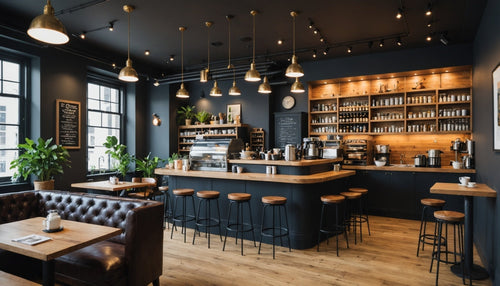Which type of bathroom lamp is ideal? How do I choose bathroom lamps? You will understand after reading this post.
When designing the bathroom, the choice of bathroom lamps should not be overlooked. The lighting must naturally adjust to the humid climate of the bathroom. So, which type of bathroom lamp is best? How do I choose bathroom lamps?
Which type of bathroom light is better:
Incandescent lamp
Bathroom lamps are used more frequently than those in other rooms. Choosing incandescent lighting will save more electricity. And we're all aware that incandescent bulbs have a yellowish tint. This type of light is softer, gives individuals a nice feeling, and makes them look more lovely. However, we can still place a daylight bulb next to the dressing table because we can see better in the mirror.

Wall lamps
For large bathrooms, consider installing wall lights that employ indirect light to create a powerful lighting impact. Install a downlight on the top of the toilet, bathtub, and shower head to provide ample lighting for these essential areas.

Recessed Lights
Because the bathroom is small and the space is narrow, you should not choose lights that are too large or too complicated. For example, crystal chandeliers and table lamps are not suitable for bathrooms. In contrast, simple, embedded lights are more suitable for bathrooms.

Pay care to waterproofing.
Bathroom lights should be waterproof due to the humid environment. It is preferable to avoid using iron lights because they are prone to becoming damp and rusty. You can select warm light bathroom lights that are not bright when bathing and offer people a warm mood.
Consider safety.
When selecting bathroom lights, consider their safety. It is recommended to avoid harsh protruding corners of lights, and the bulbs should not be exposed.
Lighting Selection
Bathroom lamps should consider the strength of the light. Too much light intensity will impair vision, therefore avoid using lamps with excessive light, as there are many objects that emit light in the bathroom itself.
FAQs
1. What rating lights do I need for a bathroom?
From a utilitarian space to a relaxing retreat, the right lighting can help you make this transition seamlessly. From deciding on what bulbs to use to determining the right colour temperature, there are lots of different factors to take into account when it comes to choosing the best bathroom lights for you and your family.
Safety is paramount in the bathroom, and understanding how your fixtures are rated is crucial. Most of the space in a bathroom is considered a dry environment; however, any area directly over a bath or shower or within Zone 0 requires specialist lighting to be installed and must be protected by a 30 mA RCD (residual current device). To ensure this safety is adhered to, it is recommended that you follow the guidelines and choose lights with a higher IP rating.
The IP numbering system is based on how well the fixture is sealed and protected from solids and liquids. Each light has a two-digit number, which indicates the level of protection. These numbers are applied to the casings, mechanical seals, and electrical enclosures and are used as a standard to compare the levels of protection against different environments.
However, this doesn’t mean you have to sacrifice style, as many manufacturers are focussing on producing lights with high IP ratings that look just as good as they perform. From sleek LED strips that suit modern interiors to classic lamp fixtures that have an old-world charm, there’s something for every home.
2. How Many Lights Do You Need in a Small Bathroom?
The right lighting is essential to a bathroom’s design and function. It sets the mood and helps with tasks such as bathing and grooming while providing a bright atmosphere for reading or relaxing. Layering lighting is one way to maximise a small space, drawing the eye around the room and making it feel bigger. Ceiling downlights, wall lights by the mirror, recessed lighting in shower niches, and low-level lights on dimmer switches are all great options.
If you’re using recessed lighting, opt for a lower-wattage bulb. The higher the wattage, the hotter the bulb will be, which isn’t ideal in a humid bathroom. Choose a bulb in the 2,000 to 3,000 Kelvin range for a warm glow that is perfect for bathrooms.
Another important consideration for bathroom lighting is colour temperature. Different bulbs give off different colours of light, affecting the overall ambiance and look of your space. For example, a warmer yellow-white shade will create a more cosy ambiance, while a cooler blue or white can be more refreshing and invigorating.
3. Where to position bathroom lights?
The first step is ensuring your space has adequate overhead ambient light. This is typically achieved with recessed cans, wall sconces, cove lights, or valances. However, a bathroom can also benefit from other types of lighting, such as accent and task lights, to illuminate nooks and crannies and create visual interest.
In smaller bathrooms, flush-mount ceiling lights can be a great solution. They sit low on the ceiling, taking up less room than traditional chandeliers or pendants. They're easy to maintain, and many styles come with a drum shade that can hide the light bulb, helping you get a clean and consistent look.
Another great option is a pendant that hangs over the bathtub or shower. These fixtures are often built to withstand splashes and humidity. They're also a good choice for illuminating a space with no window because they help fill in the gaps and give the illusion of natural light.
Integrating a mirror with light into your design can impact where you position other bathroom lights, as the illuminated mirror can serve as a primary light source, reducing the need for additional fixtures.
If you opt for recessed lights, a general guideline is to space them every two feet across the room. This will allow for ample glare control and keep the room feeling open.
4. What is the best color lighting for a bathroom?
For this type of fixture, it's important to consider colour temperature. While yellow tones can create a warm and inviting feel, it's best to opt for cooler tones like blue or white that mimic the hues of daylight.
In conclusion, selecting the right bathroom light fixtures involves understanding the types available, focusing on essential tips for optimal lighting, and addressing common FAQs. By considering these factors, you can create a beautifully illuminated space that enhances both functionality and style. Illuminate your bathroom with confidence, and enjoy the perfect blend of ambiance and practicality!



















































